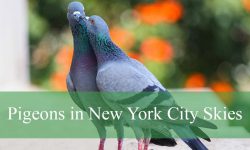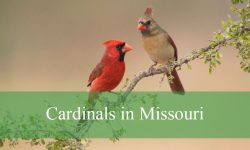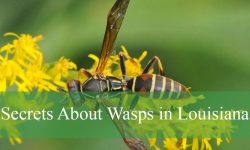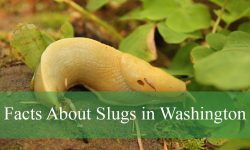Across Texas’s varied environments, flycatchers add vibrant life and unique behaviors to the bird community. These skilled insect hunters are a delight to observe in forests, deserts, and wetlands alike.
This guide covers 10 common flycatcher species found throughout Texas, focusing on key features for identification and where to find them. Learning these birds will enhance your outdoor experience.
From the vivid Vermilion Flycatcher to the subtle Eastern Phoebe, each species has unique traits and ecological importance. Let’s explore how to recognize and appreciate these fascinating birds in Texas.
Common Flycatchers Found in Texas
Eastern Phoebe
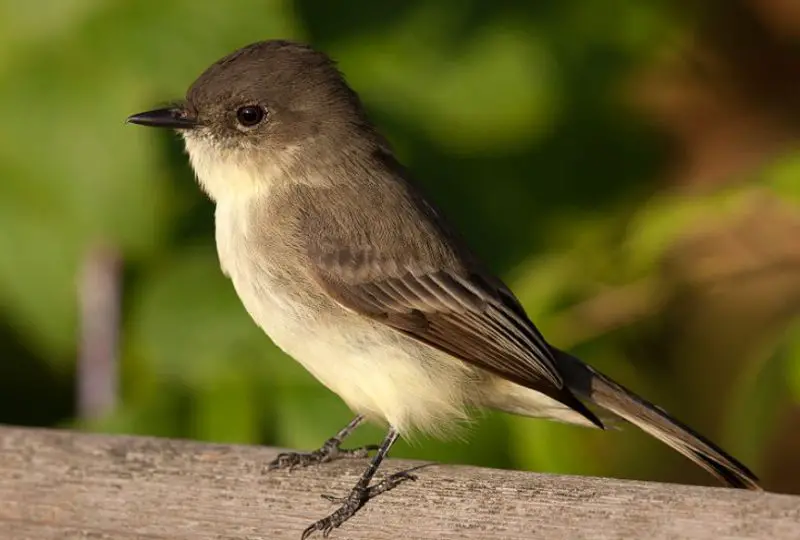
The Eastern Phoebe (Sayornis phoebe) is a small flycatcher measuring about 6.3 to 7.5 inches (16 to 19 cm) in length, with a wingspan of approximately 10.6 inches (27 cm). It has a plump body with a grayish-brown head and back, contrasting with a pale, whitish belly and a faint wash of yellow on the lower belly. One of its most distinctive features is the habit of constantly wagging or flicking its tail downward, a behavior that helps distinguish it from other flycatchers in the region.
In Texas, Eastern Phoebes are commonly found near water sources such as streams, ponds, and wetlands, as well as in woodlands and suburban areas. They are among the earliest migratory flycatchers to arrive in spring, often nesting under bridges, eaves, and other man-made structures. This adaptability to human environments has allowed them to thrive even in urban settings.
Eastern Phoebes primarily feed on flying insects, which they catch with quick sallies from perches. They frequently perch openly on low branches or wires, making short flights to snatch prey before returning. Their vocalizations include a sharp “fee-bee” call, from which their name is derived, and a variety of chip notes used in communication.
Breeding pairs build nests of mud and grass lined with feathers, usually positioned in sheltered locations near water. Clutch sizes typically range from three to six eggs, and both parents participate in feeding the young. The Eastern Phoebe’s early spring presence and characteristic tail-wagging behavior make it a favorite among Texas birdwatchers.
Western Wood-Pewee
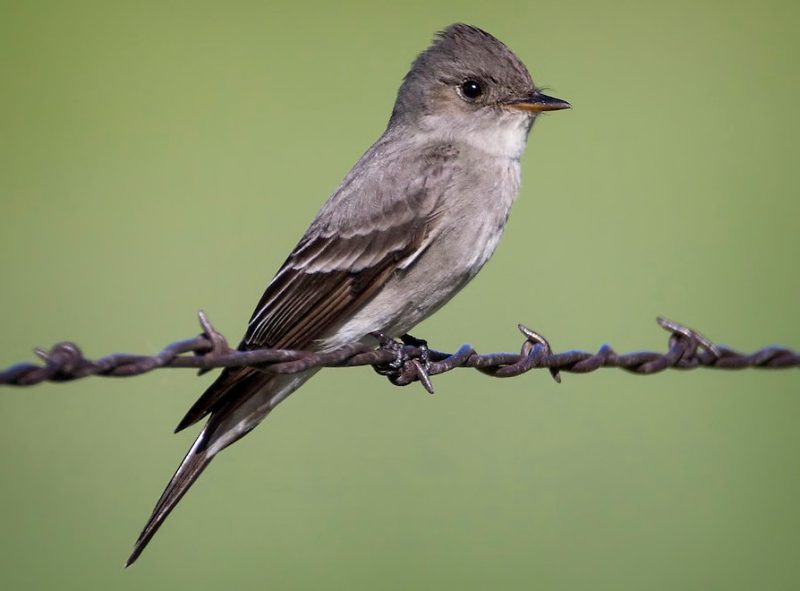
The Western Wood-Pewee (Contopus sordidulus) is slightly larger than the Eastern Phoebe, measuring about 7 to 7.9 inches (18 to 20 cm) in length with a wingspan near 12.6 inches (32 cm). It has olive-gray upperparts and pale grayish underparts, often with faint wing bars. Unlike some flycatchers, it lacks bright colors but has a subtle, understated beauty, with a soft, clear, and plaintive whistle song that is distinctive during the breeding season.
In Texas, the Western Wood-Pewee is primarily found in open woodlands, especially in western and central parts of the state. It prefers habitats with mature trees, including oak and pine forests, where it can perch quietly before darting out to catch flying insects. During migration, it may also be seen in parks and suburban areas.
This species is an insectivore, capturing prey on the wing with agile aerial maneuvers. It often hunts from a high perch, making rapid sallies to catch flies, beetles, and other insects. The Western Wood-Pewee’s slow, melodic song is a familiar sound in Texas forests during late spring and summer.
Nesting usually takes place on horizontal branches, where the female builds a delicate cup nest from moss, lichens, and spider webs. The clutch size generally includes three eggs, which are incubated mainly by the female. Both parents feed the chicks until fledging, supporting the growth of these aerial hunters.
Eastern Wood-Pewee

The Eastern Wood-Pewee (Contopus virens) closely resembles its western cousin in size, measuring about 6.7 to 7.5 inches (17 to 19 cm) in length with a wingspan of roughly 11.8 inches (30 cm). It has olive-gray upperparts and a pale underbelly, with subtle wing bars. Identification between Eastern and Western Wood-Pewees can be challenging, but the Eastern Wood-Pewee generally has a slightly more plaintive and longer song, described as a clear, descending whistle.
In Texas, the Eastern Wood-Pewee is primarily found in the eastern and northeastern parts of the state, inhabiting deciduous and mixed forests, especially those with tall, mature trees. It tends to prefer dense canopy cover and avoids open areas. During migration, it can be spotted in a wider range of habitats, including parks and woodland edges.
Like other flycatchers, it feeds by catching insects midair, employing a sit-and-wait hunting technique. It will often perch quietly on a branch, scanning for passing prey before flying out in quick, acrobatic bursts to capture insects. Its diet includes flies, moths, beetles, and other flying insects essential for the ecosystem’s balance.
Breeding behavior involves building a small cup-shaped nest on horizontal branches, usually well-hidden among leaves. The female lays about three eggs, which she incubates alone, while both parents feed the young. The Eastern Wood-Pewee’s song and elusive nature make it a rewarding sight and sound for birdwatchers in Texas’s woodlands.
Vermilion Flycatcher
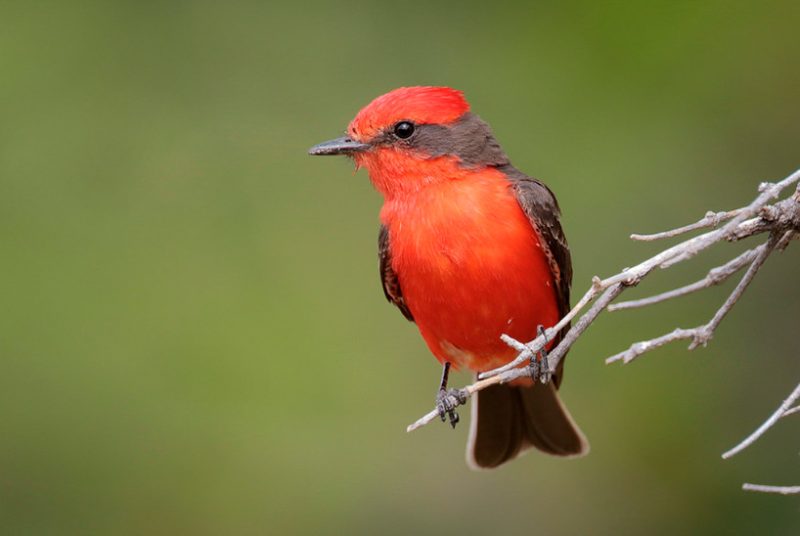
The Vermilion Flycatcher (Pyrocephalus rubinus) stands out as one of the most brightly colored flycatchers in Texas. Males are vivid red all over their body, except for dark brown wings and tail, and they feature a small crest. Females and juveniles have more subdued gray-brown plumage with some reddish hues on the chest and underparts. This medium-sized flycatcher measures about 5.5 to 6.3 inches (14 to 16 cm) long with a wingspan of around 11.4 inches (29 cm).
This species is typically found in open habitats such as scrublands, arid deserts, agricultural fields, and near water edges in southern and western Texas. Its preference for open landscapes makes it easy to spot as it often perches conspicuously on wires, fences, or exposed branches.
The Vermilion Flycatcher hunts by launching from a perch to catch flying insects midair with impressive agility. It also gleans insects from foliage occasionally. Its song is a sharp, rising whistle that contrasts with the quieter calls of other flycatchers. During courtship, males perform dramatic aerial displays, including steep dives and flaring their wings to show off their brilliant red coloration.
Nesting occurs in shrubs or small trees, where the female builds a cup-shaped nest of grasses, twigs, and other plant materials. Clutch sizes typically consist of two to three eggs. Both parents actively feed the nestlings until they fledge. The striking appearance and bold behavior of the Vermilion Flycatcher make it a favorite subject for photographers and bird enthusiasts alike.
Dusky-capped Flycatcher
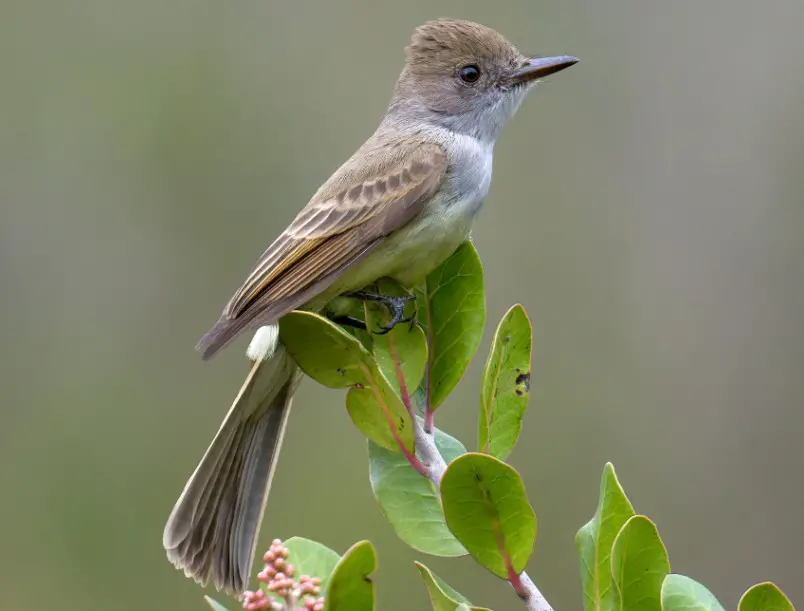
The Dusky-capped Flycatcher (Myiarchus tuberculifer) is a subtropical species that reaches the northern edge of its range in southern Texas. It is medium-sized, about 7.5 inches (19 cm) in length, with a wingspan of roughly 13 inches (33 cm). Its plumage includes olive-brown upperparts with a darker, dusky cap on the head and pale gray underparts. The tail is long and often shows rufous edging underneath.
This flycatcher prefers semi-open woodlands, riparian areas, and subtropical forests in the southernmost parts of Texas. It is less commonly seen than other flycatchers due to its limited range within the state but can be spotted in habitats with dense tree cover, especially near water sources.
Dusky-capped Flycatchers feed on a variety of flying insects, catching them with quick sallies from elevated perches. Their call is a sharp, repeated “whit” or “wit” note that can be heard throughout their territory. During breeding season, males sing to defend territories and attract mates.
Nesting habits involve using natural cavities or old woodpecker holes to build nests lined with soft materials. They typically lay three eggs, and both parents participate in raising the young. The Dusky-capped Flycatcher’s presence in southern Texas highlights the state’s unique position as a crossroads between temperate and tropical bird species.
Olive-sided Flycatcher
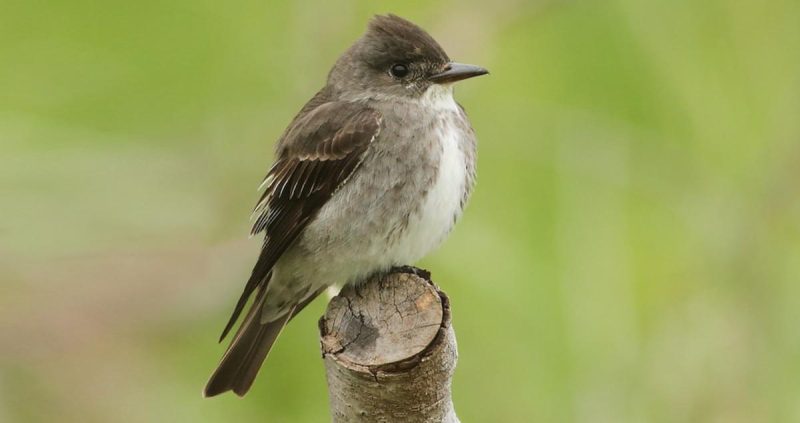
The Olive-sided Flycatcher (Contopus cooperi) is a larger flycatcher species, measuring about 7.5 to 8.3 inches (19 to 21 cm) in length with a wingspan of around 15 inches (38 cm). It has a distinctive stocky build with a short tail and a large head. The bird’s upperparts are dark olive-gray, while its throat and upper chest contrast sharply in white, often described as a “bib,” making it easier to identify in the field. Its wings are relatively long and pointed, aiding in its agile flight.
In Texas, the Olive-sided Flycatcher prefers coniferous and mixed forests, especially near the higher elevations of the Trans-Pecos region and in East Texas woodlands during migration. It favors open forest edges and clearings where it can perch prominently and scan for flying insects. This species is migratory, typically passing through Texas during spring and fall.
Behaviorally, Olive-sided Flycatchers are known for their characteristic high-pitched, three-note song that sounds like “quick, three beers.” They hunt by sallying out from perches to catch large flying insects such as dragonflies and bees. Their habit of perching on dead snags or exposed branches makes them conspicuous despite their otherwise camouflaged plumage.
Nesting usually occurs high in trees, where the female builds a bulky cup nest made of moss, twigs, and lichens. Clutch size typically includes two to three eggs, with both parents involved in incubation and feeding. Because of their specific habitat needs, Olive-sided Flycatchers are considered indicators of healthy forest ecosystems.
Great Crested Flycatcher

The Great Crested Flycatcher (Myiarchus crinitus) is a medium to large flycatcher, about 7.5 to 8.3 inches (19 to 21 cm) long, with a wingspan near 14 inches (35 cm). It is easily recognized by its bright yellow belly, olive-brown upperparts, and a prominent rufous crest atop its head. The tail feathers often display rusty orange bases, and the bird’s overall coloration is warmer and more vibrant than many other flycatchers.
This species inhabits a wide range of wooded habitats across Texas, from deciduous forests and woodlots to suburban parks and orchards. It favors mature trees and forest edges where it can find natural cavities or old woodpecker holes for nesting. Great Crested Flycatchers are common breeders throughout the state and often vocalize with loud, rolling calls.
Great Crested Flycatchers feed primarily on large insects and occasionally small fruits or berries. They hunt from perches by sallying forth to snatch prey in midair or gleaning from foliage. Their feeding behavior includes aggressive chases of insects and sometimes small vertebrates.
Their nests are typically built in tree cavities or nest boxes, lined with feathers, fur, and soft plant material. Females usually lay three to five eggs, which both parents help incubate and rear. The Great Crested Flycatcher’s striking colors and loud calls make it one of the most noticeable flycatchers in Texas forests.
Ash-throated Flycatcher

The Ash-throated Flycatcher (Myiarchus cinerascens) is a medium-sized flycatcher, measuring about 7.5 to 8.3 inches (19 to 21 cm) with a wingspan around 14 inches (36 cm). Its plumage is primarily grayish-brown with a pale gray throat and breast, contrasting with a yellow belly and rufous edges on the tail and wings. Unlike the Great Crested Flycatcher, it lacks the rufous crest and is generally paler overall.
In Texas, the Ash-throated Flycatcher is primarily found in arid and semi-arid regions, such as the western deserts, brushlands, and open woodlands. It prefers open habitats with scattered trees and shrubs, making it common in desert scrub and canyon areas in the Trans-Pecos region.
Ash-throated Flycatchers hunt by perching quietly and launching quick flights to capture insects on the wing. Their diet consists mainly of beetles, grasshoppers, moths, and occasionally small fruits. The bird’s call is a distinctive “ka-brick” sound repeated in series, which helps in locating individuals in dense habitats.
Nesting usually takes place in natural cavities or abandoned woodpecker holes, lined with soft materials. The female typically lays three to four eggs. Both parents share incubation and feeding duties. The Ash-throated Flycatcher’s adaptability to harsh environments highlights its important ecological role in Texas’s desert regions.
Say’s Phoebe
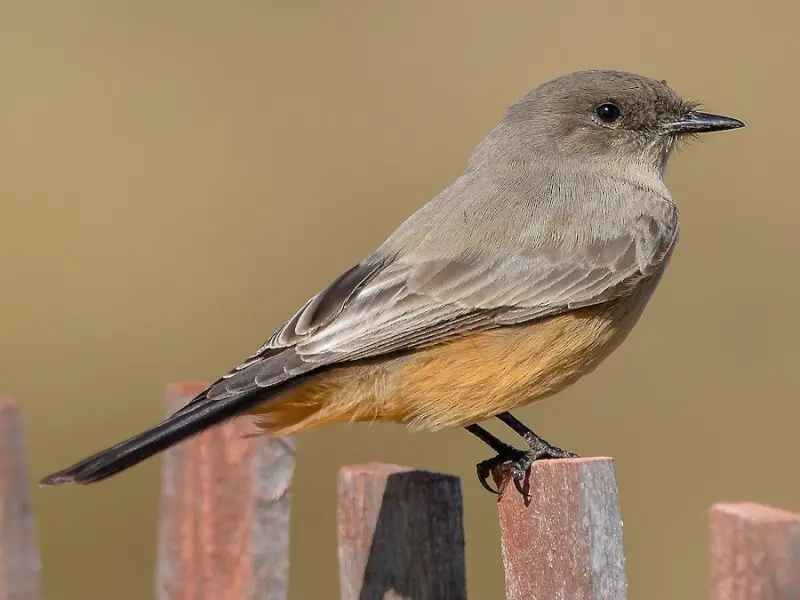
Say’s Phoebe (Sayornis saya) is a medium-sized flycatcher measuring about 6.7 to 7.5 inches (17 to 19 cm) with a wingspan near 12 inches (30 cm). It is characterized by its warm gray-brown upperparts, pale orange to rusty belly, and a darker head with a slight crest. The bill is slender and straight, adapted for catching flying insects.
In Texas, Say’s Phoebe is common in open country, including deserts, grasslands, farmlands, and suburban areas, especially in the western and southern parts of the state. It often perches on fences, utility wires, and low shrubs while scanning for prey. This species is one of the last flycatchers to migrate north and often nests later in the season.
Behaviorally, Say’s Phoebe uses short sallies to capture insects mid-flight. It also gleans insects from foliage occasionally. The bird’s song consists of a high-pitched series of whistles and trills, though it is generally quieter than other flycatchers.
Say’s Phoebe nests in cavities, on ledges, or sometimes on buildings, building a cup nest made of grass, feathers, and hair. The female lays between three and five eggs, which are incubated for about two weeks. Both parents feed the chicks until they fledge. Its adaptability to human-altered landscapes has made it a resilient species across Texas.
Black Phoebe
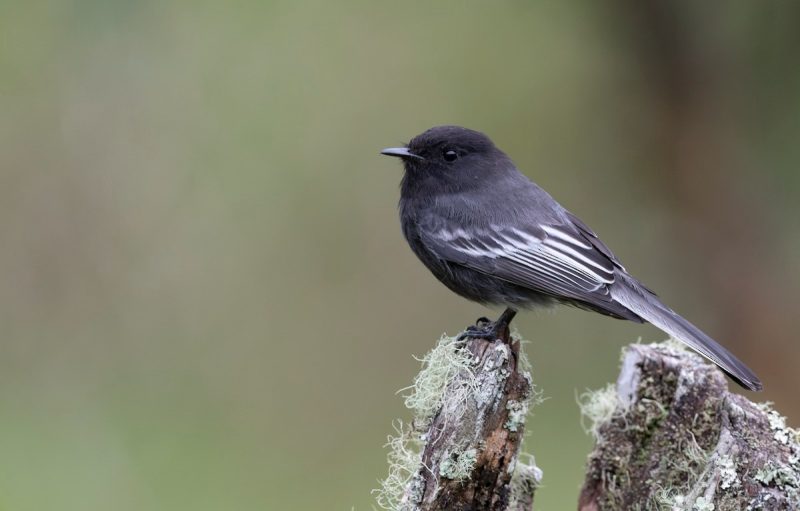
The Black Phoebe (Sayornis nigricans) is a small, distinctive flycatcher measuring approximately 6.3 inches (16 cm) in length, with a wingspan around 10.5 inches (27 cm). It is easily identified by its entirely black plumage contrasted by a bright white belly and undertail coverts. The tail is often flicked upward, revealing white patches underneath, a behavior characteristic of the species.
In Texas, Black Phoebes are typically found near water bodies such as rivers, streams, ponds, and reservoirs, mainly in the southern and western parts of the state. Unlike many flycatchers that prefer woodlands, Black Phoebes favor riparian habitats and are commonly seen perched on rocks, branches, or man-made structures near water.
Their feeding behavior consists of rapid flights from perches to catch flying insects such as flies, beetles, and mosquitoes. They also occasionally hover briefly while gleaning prey from foliage or the water surface. The species’ call is a sharp “fee-bee” or “tsip” sound repeated often throughout the day.
Black Phoebes build nests of mud mixed with grass and feathers, typically under bridges, eaves, or rock overhangs. Clutch sizes range from two to five eggs, and both parents participate in feeding the young. Their affinity for water and bold, contrasting coloration make Black Phoebes easy to spot and a favorite among birdwatchers in Texas.
FAQs About Flycatchers in Texas
What are the most common flycatcher species in Texas?
The most common flycatchers in Texas include the Eastern Phoebe, Western Wood-Pewee, Eastern Wood-Pewee, Vermilion Flycatcher, and Say’s Phoebe.
How can I identify a Vermilion Flycatcher?
Male Vermilion Flycatchers are bright red with dark brown wings and tail, while females are more subdued with grayish-brown and reddish tones on the chest.
Where do Black Phoebes typically live in Texas?
Black Phoebes prefer riparian habitats such as rivers, streams, and ponds, mostly in southern and western Texas near water sources.
When is the best time to see Western Wood-Pewees in Texas?
Western Wood-Pewees are migratory and are most commonly seen during spring and fall migration periods in woodland and forest edge habitats.
Do flycatchers migrate through Texas?
Yes, many flycatchers are migratory and use Texas as a stopover during their long-distance migrations between breeding and wintering grounds.

